Season 2 Episode 10 Transcript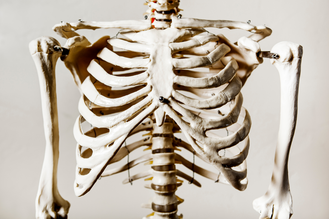 If you're not breathing well, then while you're maybe not getting lightheaded and actually threatening to fall over on us, you're also not optimizing how you're actually getting through your day. If you're breathing with your chest a lot, that can actually directly lead to anxiety. Your chest is made up of essentially the breast bone, and the collar bones, and the breastbone doesn't move. It doesn't flex. It's one large piece of bone, like a shield covering your ribs and also your heart. So in order to breathe with your chest rising and falling, what you're actually doing is arching your upper back. That arching movement puts pressure on spinal nerves that come out of the spine and go into the lungs. So when those nerves get triggered they can believe that they're not functioning the way that they're supposed to, in the ribs and in the lungs, and the feedback that they give your brain is that you can't breathe. So working your lungs, from your chest by arching your back, can cause anxiety or even a panic attack.  Most shallow breaths come from lifting your chest instead of breathing with the whole rest of your body. You've probably heard that before, about shallow breathing. But another way that you can trigger this is by driving when you're upset. A lot of people, myself included, have the tendency to push off of the steering wheel into your seat. I think it has something to do with when you're frustrated there's not much physical that you can do about it that is socially acceptable. But when you're driving and you're upset, you can push, you can engage all of those muscles, without it being at all socially unacceptable. And that can feel satisfying! But the pressure of your arms, pushing your upper back into the seat of your car, can have the exact same effect on those spinal nerves that go into the lungs, get too tense, and tell the brain, “I can't breathe”, and you can actually induce anxiety or even a panic attack while you're driving. Point is, please relax your grip and take a deep breath! Now we've also probably heard about belly breathing. It’s very common, especially a lot of yoga practices and stuff, and belly breathing is really nice because we tend to have really tight bellies. I'm going to talk about that in just a second. So doing a belly breath helps to sort of flip the pressure, where we're used to sucking in to releasing it and that can be very difficult, that can be a practice that a lot of people have to learn in the first place. So belly breathing can help take the pressure off the chest, it can help take the pressure off the upper back, and it can help take the pressure off of the abdominal cavity a bit. But if you're only belly breathing, then you're causing pressure in the pelvis. Because the belly moving in and out causes pressure fluctuations, up and down the chain, up and down the rest of your body. And so that pressure going into your pelvis, while it's a small amount, it builds up over the course of an entire day of belly breathing. So in order to not put excess pressure into the pelvis, we want to look at the alternative here to both belly and chest breathing, and that is called thoracic breathing 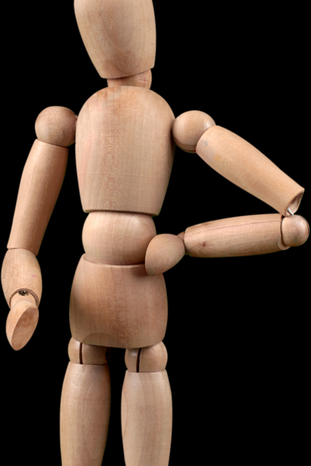 The thoracic part of your body is the upper part of your torso. It's where your ribs are, and where your ribs attached to your spine. That's why the upper part of your spine between your neck and your low back is called the thoracic spine. Inside your thoracic cavity is the lungs and the heart as well. Thoracic breathing means that you're using the rib cage- it’s also often called rib cage breathing- you're using the rib cage like fireplace bellows opening and closing opening and closing to move air. And the belly is a supplement to that, instead of the moving of the belly, or for that matter the moving of the chest, being what's causing your air to move. Remember you breathe by a set of vacuums. When you draw the diaphragm down, it creates a vacuum in your lungs which sucks air in and then you use muscles to squeeze that air back out again. Engaging the rib cage to open will also create that vacuum, and then the rib muscles themselves can close that rib cage down to squeeze the ribs, to squeeze the lungs, all the way around. However, we're not very good at thoracic breathing, we're not very good at using our rib cage like a fireplace bellows, and here's why  Basically, we are taught to walk around in the world “Boobs out bellies in.” Think about that overdramatic military posture with the chest thrown out. Think about those old cartoons- I can't think of what the name of the cartoon was but I can picture a guy standing on a beach. And he's got a belly. And this little stick figure of a woman walks past in a bikini, and he suddenly sucks his belly in, and his shoulders get broad and his posture is huge. And when she's walked past he lets his belly go again. And he returns to what we would now call a dad bod. That posture “belly in chest out” is, well, it's not a good posture! It's a fake good posture. By throwing the chest out, you're arching the upper back. Go back to the beginning of what I was just saying here- arching the upper back causes not only tension in the spine, in the ribs, in the neck, but also anxiety in the brain, because of the nerve signals that are getting stuck with that constant arching. By throwing the chest out we also then end up having to suck the belly in, to counterbalance that so you don't just fall over  Right now, aesthetically, our culture thinks having a flat stomach, having a sucked in stomach, is appropriate. Functionally, that's not appropriate. Functionally your belly needs to move in and out, it needs to have enough space in it as a container to hold all of your internal organs, to allow for things like digestion and elimination- the size of which then is going to fluctuate throughout the day. And your belly is a supplement to your breathing, so it does need to move out and in. And most people that practice belly breathing, the first couple of times they try it (like for example a yoga class if you're sitting up and you try to belly breathe) people find they actually have to push their bellies out in order to expand that, because we have spent our lifetimes sucking in. When you suck in you're creating pressure, you're squeezing the balloon that is your abdominal cavity, and that pressure has to go somewhere- up or down. Once we start breathing with your rib cage, once we let the ribs expand and contract the way that they're supposed to, we can take a lot of pressure off of the belly-
And in relaxing the ribs and moving through the breath through the rib cage itself, we take pressure and work out of the belly. So, breathing well becomes a structural, a postural kind of thing that requires less tension, less concentration, less exertion than what we've taught ourselves to do over the course of our lifetimes. That “boobs out belly in” position is hard to maintain, and it's hard on our bodies! Coming back into all of that alignment so that the ribs can actually move- it’s a relaxed place, it's kind of nice to hang out there. So next week I’m going to teach you how to take a thoracic breath, how to feel your ribcage actually move when you breathe. And we’re going to play around with that in our next episode. Listen to this Episode
0 Comments
Season 2 Episode 9 TranscriptI'm going to be running a free challenge soon, all about breathing better. So I put out a survey in preparation for that, asking people about their challenges around breathing, and breathing practices, and that type of stuff. One big answer that really stood out to me was that when asked the question, “What could you use better breathing for”, 95% of the people that responded to my survey answered, “stress, anxiety and mindfulness”. 95% is a lot. That's huge. And that is definitely something I can work with here. Now, to that one person who responded that they didn't need that- Congratulations! Please share your secret. To the rest of us, we've all heard about breathing techniques, we've all heard about doing breathing practices, and we know that they are related to stress and anxiety and mindfulness improvements. There's lots behind this- lots of research, lots of resources. I will link to a few of them in the show's transcript. I have some colleagues that have some really nice resources, really nice programs that you can try. I also have some other resources in general that I can share. I'm not going to get into all that right now. What I am going to get into here is the bottom line, which is that breathing helps everything.  Yes, it helps stress. A few episodes ago we talked about the Vagus nerve, and the parasympathetic (or the rest and digest system) and how that directly opposes the fight or flight system. Breathing absolutely helps you get into that rest and digest place. You can also use breathing, to help control things in your body. When you're exercising, when you're moving heavy objects- whenever you're using muscles, you can use a breath to help control all of that as well, for fuel, for power, all of it. But what does this have to do with your pelvic floor? Well, think of your body as two separate sections- there's your your midsection, your torso- everything from your neck to your pelvis; and there's your limbs. Ignore your limbs ignore arms and legs for a second. In that torso, you have essentially three cavities, and they act like individual balloons. You have one in your chest. It's called the thoracic cavity. You have one in your belly, called the abdominal cavity, and you've got one in the pelvic bowl called, funnily enough, the pelvic cavity. Each of these cavities makes and takes pressures from the rest of your body. So when you're breathing well, in that thoracic cavity, (which, spoiler alert, is where your lungs reside) It helps take the pressures, off of the abdominal and then the pelvic cavities. Often, we're not breathing, with our rib cage with our thoracic cavity, however, And so, that balloon isn't functioning. The belly cavity, that abdominal space, ends up doing most of the work of the breathing, and that is putting excess and unnecessary pressure into the pelvis. This is quite frequently one of the foundations of pelvic floor dysfunction. And it simply goes back to, how do we breathe with our ribcage the way that the ribcage was designed. Now, that “how to”? I’m going to explain that in next week’s episode. But today I just wanted to point out all of the layers here. There's layers in your body to help move things like breath around. And when used appropriately, everything works better. But then the breath itself has so many layers of help for the rest of you. Yes that breath helps with stress, yes that breath can help with physically moving around.  But if you do anything like sing, or do a podcast, or any kind of public speaking, or presenting on a stage or in front of the zoom screen, if you play a musical instrument, if you have a manual hobby, like gardening or anything that requires some exertion a little bit more than knitting (both gardening and knitting, our hobbies of mine, I'm not knocking that!) but the manual exertion type hobbies- the breath is going to be something that is very important for your stamina, for your endurance, for your longevity in those as well. So next week we’re going to get into a little bit more about how to breathe better. For today, I want you to just think about where does your breathing actually happen. Holistic Lifestyling Podcast Season 2 Episode 4 Transcript  What does "R & R" look like to you? Everyone has their own particular favorite way to rest, restore, relax, and recuperate- mine involves a hammock and a pillow and a book and a nap- but at the heart of this idea is one particular body structure- the Vagus Nerve. Our fight-or-flight stress response, called the Sympathetic Nervous System, is responsible for creating and regulating all our reactions to stress, and it has a clear headquarters- called the HPA axis- that controls the feedback loops that respond to all the internal and external stressors we experience. By the way, it's our culture-informed thinking that distinguishes between "good" and "bad" stress. To our HPA axis, it's all the same stress. Survival is an extraordinarily basic need, so a phone beep is the same as a tiger. I talked a bit more about this in episode 2 of this Season 2 Stress series. On the flip side, our R&R system, the Parasympathetic Nervous System, is the one responsible for actually opposing the stress response and allowing us to, well, live. The PNS is spread out all over the body. There's no headquarters for the Parasympathetic system because we were designed to live in this state most of the time, so it's expecting to be the default position of our nervous system. Take that in for a second. The Parasympathetic Nervous System, the R&R system, should be our default. But which system are your more familiar with? Right. Fight or flight, the Sympathetic Nervous System. We live in fight or flight, we're bombarded with messages to it and information about it. That's why it takes work and practice to get back to the rest and restore state, that PNS that should be our all-of-the-time situation. It's kinda backwards, to have to work to get into a resting state, but this is the world we have created. We have to make do. So what we've got so far is the 'fight or flight' stress response, which is the Sympathetic Nervous System, this is the one we're all familiar with in our experiences and also that we hear a lot about; and we've got the 'R&R' living response, the Parasympathetic Nervous System, the PNS, which we want to get back to more frequently and more quickly for a bunch of reasons I'll tell you about in a minute. When we're trying to access the PNS, when we're trying to get into that R&R state, it's not as easy or straightforward as accessing the fight or flight sympathetic system is. I mentioned there is no specific headquarters for the PNS and that it's spread out all over your body. However, the Vagus Nerve comes closest to filling this role of PNS HQ. And guess what- you can exercise your Vagus! This means you can strengthen your ability to get back into (and stay in) your R&R state whenever stress has bumped you out of it. The Vagus is a special nerve because it comes directly out of your brain into your head and facial structures, like your ears and voicebox, rather than coming out of your vertebrae like most other nerves do, and it travels from your head down into your abdomen where it helps all kinds of organs and functions along the way. The Vagus is involved with things like speech, thyroid function, digestion, blood pressure, and elimination. This means there's a lot of places we can impact it, and a lot of places for things to go wrong. The amazing thing about the Vagus is that when it's activated, things RELAX. Usually, we think of the nervous system activation in terms of tension- activate a nerve and muscle contracts, that sort of thing. Instead, muscles and structures connected to the Vagus nerve expand and relax when it is activated. This looks like:
Much of your Vagus Nerve is in your abdomen, and your abdomen is cram-jam full of stuff. You've got solid organs held in place by nets of connective tissue, hollow organs expanding and contracting, miles of intestines squashed in by core muscles, not to mention bony cages and girdles and a spine built like a stack of teacups. Getting as much of that as aligned and functioning properly as possible is essential to the Vagus having room to activate. It can get suppressed and turned off just like any other nerve. So I'm going to share 3 mini exercises with you to help this alignment and function. Exercise #1- Stack Your Ribs and Hips Try this. Lie on your back and find the bony triangle markers in your pelvis- 2 hip points on either side of your hips, and a pubic bone down front in the center, south of your belly button. You're lying on your back, so these 2 hip points and pelvic bone point should all be pointing straight up at the sky. We're not working with the side of your hips, we're working with the front of them. Assorted belly-ness is not the point here, the bony markers are, and may I just state for the record that size is not an indicator of health, nor is health an indicator of value. Exit soapbox. So these 3 bony markers, right, they need to be parallel to the floor. Do a little tilting forward and back- you'll find that the pubic bone raises and lowers relative to the hip points. Then find that parallel to the floor position. This is called a neutral pelvis. Next, your ribs are probably arching up towards the ceiling. Bring them down to the floor, so the upper back is relaxed down and you feel a flatness across the shoulder blades, not a pinching or winging position. This is a neutral rib cage. Now try these 2 positions at the same time- both sitting, and then standing. When you're upright your neutral pelvis is now perpendicular to the floor (straight up and down, aka 90 degrees to the floor), and the ribs are down over the hips, not popped forward in fake "good" posture. These are the quick and dirty directions- I give more clarity and demonstrations in videos in my free Resources Hub. Once you've aligned your skeleton, it's time to start letting it move in this position: Exercise #2- Breathe With Your Lungs Obvious, right? Well, no. We do a lot of our daily breathing with either our belly or our chest, which causes problems. Now, breathing practices are different, and have their own purposes. I did talk last time, in the last episode [edit to add, 2 episodes ago!], about breathing as an external activity you can do to help manage your stress response. This time, I'm talking about your daily, not-really-thinking-about-it breathing, but learning this will help you in your breathing practices too. Since your belly is so crammed with stuff but there are no bones in your belly, it's all held in place by an intra-abdominal pressure created by your core muscles. When you just use your belly to breathe, it messes with this abdominal pressure and that can lead to problems like pelvic floor issues, hernias, or even reflux. Breathing with your chest is difficult, since the breastbone doesn't actually expand. This means your breaths will be shallow, making you breathe more often, and it can create anxiety responses because of the pressures on your upper back spinal nerves when you make the upper back arch to lift your chest to breathe in. But because most of us walk around thrusting our chests out in fake good posture (you can fix this with Exercise #1 pleasepleaseplease), we HAVE to belly and chest breathe since the ribs have nowhere to go.  After you do exercise #1, once you've gotten your ribs relaxed down, it's time to reintroduce your ribs to the breathing machine again. Take a belt, an exercise band, or your hands and wrap them around your rib cage so you feel the front, back, and sides of the rib bones. Slowly take a breath in, and feel for 360 degrees of rib cage expanding, all the way around. Feel tension increase in whatever you have wrapped around your torso as you inhale and expand the ribs, and feel that tension decrease as you exhale and close the ribs back together. Relax your shoulders and your belly, we're trying to move only ribs. This might seem simple and not worth the effort of trying as you listen to me, but I challenge you here and now to see what it actually feels like in your ribcage. By popping your ribs forward, in that fake good posture, you've probably lost a lot of the muscles in and around your ribs, and the points where the ribs meet your spine are probably really stiff and inflexible. It is HARD to get your ribcage to move in the way I'm describing here. I challenge you to see for yourself. It takes practice to get all this moving again, but once you do your ribs can do the work they were designed to; they can buffer the breathing pressures they were made for, easing the load on your abdomen and upper back. This lets the pressure on your Vagus nerve normalize as well. Keeping unnatural pressure in your torso because of poor posture keeps the Vagus from responding appropriately. Aligning and normalizing the way you hold and move your body is the first step to improving how your Vagus nerve works. Once this proper positioning is in play, it's time to talk about tone. You might know of tone in terms of muscles- this is when muscles have a certain amount of engagement all the time. They are ready to respond. Nerves, including the Vagus, can also have tone and be more or less prepared to respond. Good tone is always a good thing. Exercise #3- Tone Practice Since the Vagus goes through so many head and neck structures, there are a bunch of ways we can directly impact it to help strengthen it. Here is a list of small practices you can work into your day. All of these trigger the Vagus nerve to activate, building its tone and also relaxing things in the body so they work better:
These ideas will improve the tone of your Vagus nerve. Why do you care? When you've got good Vagal tone during a stress response, you'll:
And good Vagal tone is associated with:
So, we're trying to access the PNS after you do experience stress, so that you can return to an R&R state. You can help this along by aligning your skeleton to ease physical stress, and by practicing triggering your Vagus nerve so it's got good responses when you need them. All of these are pretty simple, beginner level ways to exercise you Parasympathetic Nervous System, and stop living in the fight or flight system. Now my question to you is, do you already practice any of the exercises I gave you today, or have you been inspired to try something new? Share how it feels for you by leaving a comment, and tagging me @paulasherbals if you're commenting on Instagram. I look forward continuing this conversation! Holistic Lifestyling Podcast Season 2 Episode 3 Transcript Whether we’re talking about stress or any other body system that can use support, herbal remedies are an important part of a holistic approach to your wellness because how you treat your insides is just as important as how you treat your outsides. In the last episode, I talked about the external things you can do, the activities you can do with your body to influence and improve your stress responses. If you haven’t listened to this, I recommend you download it now and catch up! Today I’m going to talk about the internal things you can do to help manage your stress responses. My focus is on the herbs and the remedies that you can work with, but I do want to mention things like a good diet and drinking more water and taking your multivitamin can also all be parts of these more internal supports. I’m not a nutritionist and I don’t want to go there, so eat well and drink more and follow the good nutrition advice of the professionals! I am, however, an herbalist. Yes, I’m a movement coach and a pelvic floor specialist, and also an herbalist. If this is a surprise to you, then I suggest you check out my season 1 episode 8 where I introduce myself and explain why I’m not a guru! My very first podcast episode, labeled number 00, will also help you understand who I am and how you got here on a podcast about whole body wellness, inside and out. First Things First In my capacity as an herbalist, it’s so important to me to say first that plants weren’t invented for our things. Pharmaceuticals were, and they work well in that capacity. But plants are their own complex chemical beings, and it’s more useful to think of them as a friend group. Different people play different roles in your life, but these people also stand alone and have their own lives. Different plants can play different roles in your life, but they can have a very different relationship with another person at the exact same time. Plants don’t exist to solve our health problems. My classic example of this is coffee. You might drink a cup or 2 in the morning. Someone else might live on it, fueling their bleary eyed workday and demanding more of their body and the coffee bean than is reasonable or healthy. On the other hand, I am one of those people who can’t drink coffee at all- it gives me heart palpitations and makes me vibrate like I’m going to stick to the ceiling and I get nauseous right away. Same plant, different relationships with different people. The point is, there’s no “herbs for stress”. What there is, is a group of plants who interact with us and our nervous systems in different ways that end up helping us regulate, resist, and be more resilient to our internal and external sources of stress. When you find a “stress” blend in the tea section at the store or in a tincture bottle at a health food store, or if you sit down with a clinical herbalist who makes specific suggestions or even blends you up a personal formula, the individual herbs in that blend haven’t been randomly chosen- I hope!- simply because they’re “stress” herbs. 3 Categories of Stress Relief We’ve got 3 basic categories of herbal stress relief-
Let me give you the super short, mini overview: Nervines influence the nervous system.
They were given the name “Adaptogens” by the Russians in the 1950’s and 60’s while they were trying to figure out how to force more work from their workers in terrible conditions. There is some terrible research behind the knowledge we have now, and I believe we can best honor the people who suffered for these experiments by working with these plants in pursuit of recuperation and health, which honors their more traditional understanding, instead of using them to force long work days days and all nighters and those types of personal abuses that were desirable under communism, and are often sources of misplaced pride in today’s grind culture. Adaptogens all act differently- they fall on a spectrum between calming and stimulating, but all of them help improve energy levels. Also, which plants specifically fall under the heading Adaptogen is sometimes up for debate, but that ability to have personal and professional experience and discussions is one of the things I like best about herbalism! Adaptogens you may have heard of include
Tonics or Nutritives are herbs that blur the lines between food and medicine. These are plants that contain very high amounts of things like minerals and other micronutrients that help your body repair and restore itself long term. They are often worked with as teas that steep overnight so they get very strong and concentrated: Now What Nervines, Adaptogens, and Tonics- these are 3 groups of herbs that play different roles in helping us resist, recuperate from, and build resilience to our stressful lives. The point of giving you this overview is NOT to make you an expert after a few minutes of a podcast! Rather, I wanted to introduce you to the idea that plants have chemical complexities, almost personalities, and that our familiar, more medical approach of “take 2 and call me in the morning”, that idea that there’s a pill for your condition, doesn’t work with plants. This isn’t to overwhelm you, I’m not suggesting you now have to become knowledgeable about all the possible plants that might help you manage stress better. Instead, what I hope this does is give you an overview about why there are so many ingredients in stress blends, and also why your favorite blend might be different than someone else’s! Finding the herbs that work best with you can be like dating- you might just wade in and start sampling all of them, or you might work with an herbalist who matchmakes FOR you, simplifying and shortening the process! Where to StartIf you are listening to this and now wondering where to start, there’s a couple of simple things you can do first. These ideas are in increasing order of your own personal involvement:
Remedies And keep in mind, if you pick an herb to try out- or for that matter, an herbalist to work with- they may not be a good fit. That's perfectly fine. You know more about how they work now, plant or person, and you might be able to suggest them to a friend of yours sometime who they would fit better with. One final note is that I'm mostly talking about tea here because it’s super simple to put hot water on a teabag, and you can find them most anywhere. Tea is one of the easiest starting points to working with plants, but another pretty common remedy you’ll see on the shelves if you go to a fancier grocery store or an independent health food store or maybe an herbalist’s shop or stand at a farmer’s market, is a tincture. This is a more concentrated remedy than tea- usually it’s an alcohol-based extract of the plant. Think of putting vanilla beans in vodka to flavor it, but stronger and with the purpose of extracting the therapeutic benefits of the plants, not just flavor. It might not be alcohol, there are other options like glycerine or vinegar, but the point is these are remedies in little bottles with dropper tops that you take by the drop or the squirt, as compared to tea that you drink by the pint or the quart. You might take the tincture directly in your mouth, or you can add it to other drinks to dilute and disguise the flavor- the instructions will give you direction as to how and how much to take. Because they’re more work to make tinctures are more expensive than teas, but because they’re concentrated they’re also used in much smaller doses so they last longer, and because they're already liquid they’re much easier to work with than tea is. So if you’re feeling like tea is too much work, too many steps with water and containers and hot or whatever is getting in your way, you can venture into the apothecary section of your grocery store or farmer’s market and try tincture-based remedies instead! I’ve mentioned a lot of specifics today that I’ll link in the shownotes and the show transcript when it comes out later this week. I’m trying to give you a broad overview of how to start working with herbs that can help you manage stress on your own. If the idea of sitting down with an herbalist sounds more your speed, or you come to that decision later on, do a local search and see who might be practicing in your local area. If you come up empty then reach out to me and we’ll see if we can find you a good herbal fit.
Listen to Today's Episode Holistic Lifestyling Podcast Season 2 Episode 2 Transcript Welcome back to our ongoing series about a holistic perspective on stress. Last time we talked about the broad strokes of how we understand and manage our stress responses, and what to focus on. If you haven’t listened to that episode, hit pause and download it now so that you can catch up really quick. I think, personally, that the topic of Stress is a great way to really explore full body ways of thinking. Everything that your body does internally, or notices externally, is a source of stress- this is how things get done in the body! It’s not inherently bad to experience stress. And the way we react, how our bodies automatically respond, is all by itself holistic. Every system in the body is constantly playing a balance game- turning up and turning down, inputting and outputting, resting and reacting. So when we talk about “stress” as something to reduce or eliminate, we’re really talking about things you can do to help your internal systems find equilibrium, and things you can do to block or shield external stressors, including taking supplements that help your internal systems function 3 External PracticesToday, we’re going to look closely at the external stressors coming at you, and the things you can physically do to help yourself manage stress responses are going to sound like a familiar list:
The reason we care is because these active choices you’re making directly impact your nervous system. Later on in this series I’m going to tell you more about the “rest and digest” system. For now, just know that this is the system in your body that not only OPPOSES the fight or flight system, meaning it actively shuts down chronic stress when it turns itself on, but it’s also supposed to be the default position of our nervous system. We tend to live in fight or flight, but we’re supposed to live in rest and digest and our bodies want to get back there! #1: Deep Breathing The important thing to learn right now is that we can only influence this Rest and Digest directly in two ways- through visual stimulation, and through breathing. When we close our eyes and shut off visual input it helps our Rest and Digest to activate. The act of seeing is the act of our brains being on alert to recognize potential danger. Blocking that out is a shortcut to easing the input of external stressors. Deep breathing is the other way we have to activate this system, which in turn quiets the fight or flight responses. There are piles of breathing practices and techniques you can learn about, not to mention apps, websites, and devices to prompt you and track you and help you practice- you don’t need me to rehash all that. Just pick one and start breathing! #2: Exercise and Movement Practices Now, the second practice is where I think things get interesting! This is Exercise and Movement. Exercise certainly stresses the body, that’s it’s job, and the idea is that on the other side of exercise we’ve “worked it all out” in some way and that makes us feel better. So for me the big question is, Where’s the line between helpful and just more stressful? Again, there’s more details coming in later installments of this Stress series, but the CliffNotes version of one of the major processes going on here looks like this: When we’re constantly exposed to micro-stressors (as in, when we live our familiar lives!), our stress response is a constant, low-level drag on ourselves. Immune function is sub-optimal, digestion is slow, sleep isn’t great, you see what I mean? But, when we have some sort of big “event” that causes big stress (think exercise or getting cut off in traffic), AND we manage to have a concrete end to that stress (like ending the exercise class and drinking some water), doesn’t it feet really good? That constant, low-level drag keeps us in limbo between actually having an acute response, and feeling fine, by dripping out our stress chemicals. It’s the same lifestyle that our ancestors might have recognized as seasonal lean times like Winter, for example. And when we experience this, we might start losing lean muscle, storing fat, sleeping more, and experiencing brain fog- all things that would help us survive a long winter. In contrast, a big event dumps those stress chemicals in large enough amounts to reach the critical trigger point that also shuts them off! And you can reach this critical point with only 45 minutes of walking at a pace that makes talking a challenge. It’s that simple and straightforward. (I’m paraphrasing here, but if you want all the good details I recommend you look into herbalist Tammi Sweet’s Anatomy courses, especially the Heart Coherence.) #3: Meditation One more piece here is meditation. There’s no question that meditation is a mental practice that helps us respond to, recover from, and be more resilient to stressors. And again, there are lots and lots of ways you can go about learning any of the many types of meditation, many of which include breathing practices. Personally I’ve used Chopra Center guided meditations, the Insight Timer app, and the “morning pages” style of journaling to quietly meditate. But here’s the fun idea I want to introduce into this discussion about breathing, movement, and meditation as practices that manage stress responses. Are you familiar with moving meditations? This can look like walking, or walking in a labyrinth, or doing a meditative practice like tai chi or qigong. It can be an engrossing yoga class, and I’ve seen it happen in my reformer pilates classes. Basically any movement that is slow enough for you to focus deeply on your movement and your breathing, and keeps you focused for at least 45 minutes, is a moving meditation. And to me, this is the best of all worlds, a win-win-win! You’ve got your breathing, your movement, and your duration. But however you physically get involved with improving your stress responses, the old adage ‘practice makes perfect’ certainly applies here. The more you practice, the easier and faster it is to get into the proper headspace and actually do the practice. I call these types of practices “external” because these physical things you can do, these practices like breathing, movement and meditation, are choices you can actively make for your body. Internal Practices Yes, you breathe all day every day but DEEP breathing exercises are something you do deliberately. Yes, you end up moving around during your day but choosing to do 45 minutes of moderate exercise takes deliberate thought, or they won’t happen. One more thing- there are passive, external practices you can choose as well. Did you ever hear of a “Digital Detox”? This is a deliberate disconnection from all things technology, and it’s one major way to manage the stressors that are coming at you. By removing yourself from the constant deluge of information and noise on TV, social media, email, notifications, ringers, alarms, you’re actively relieving your nervous system of the need to respond to them. This can be as easy as a few minutes drinking your first cup of something hot in the morning while staring out a window and refusing to do anything tech related until you’re done, or it can be as immersive as a long weekend at a cabin in a state park with no wifi or cell service. Since your internal systems are constantly filtering out stimuli and stressors, giving them a break can only help! So we have both active and more passive external activities that we can choose to take on to help manage our stress loads and reactions. This means, logically, that there are “internal” considerations too- and this is what we’ll look at next time. You have internal systems that are already reacting to stressors- the nervous and endocrine systems causing the stress responses, the digestive and immune systems shutting down to stay out of the way, the muscular and cardiovascular systems reacting…and the ways you can influence these systems include some fantastic herbal and food based remedies. So stay tuned for next week’s episode! LISTEN to today's episode Holistic Lifestyling Podcast Season 2 Episode 1 Transcript Stress. It’s such a tiny word, with such a big impact. It’s what keeps us safe, and it’s also what can hold us hostage. Finding a balance in there, where you respond appropriately and also manage to leave the response state and come back to a resting state, is the big goal. The first thing to really understand is that stress is just the process. Back in season 1 I talked about injury and healing, that was in episode 8, and I said the same thing about the inflammation process. Both stress and inflammation are just processes that your body has, to do important stuff. It’s when the shutoff signals don’t happen, or when the stressors themselves don’t stop, that we have issues. How We Understand Stress Stress response is a process we just have innate in ourselves because the world is a constant source of inputs for us to figure out and decide if they’re dangerous. Sources of stress can be external (events and situations that happen TO you) or internal (self induced feelings and thoughts), and the Mayo Clinic describes these this way: External Stressors:
And Internal stressors:
Taken together, these are the sources of stress that we can try to influence and support so our responses to them are healthy and appropriate. Arrgh! The stress of it all!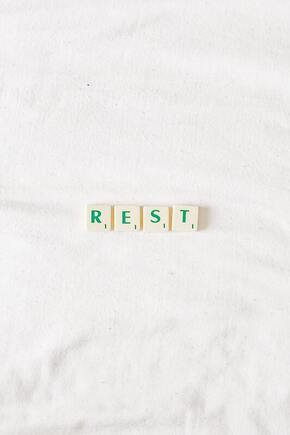 So, here you are. You’re stressed, and you’ve acknowledged and cataloged your external and internal stressors. Are you ready for that holistic approach to supporting yourself yet? Wait! There’s still one thing to consider- the spectrum of acute stress and chronic stress, because where you’re falling in between them matters to how, and how much, you can influence your response. Acute stress is a slap in the face- literally and figuratively. It’s the sharp shock, it’s the “flight” reaction to the perceived threat like a saber toothed squirrel or the zombie in a haunted house at Halloween that gets you out of there faster than a speeding greyhound. It’s also the freeze response to hearing an unexpected noise in your house at night, or when you get caught doing something you shouldn’t, or the fight response you might feel when a stranger touches you in public (or maybe that’s just me!) or that gives you the surge to wrench a stuck door open when you suddenly feel claustrophobic or trapped. And you know what? All things being equal, this acute response is pretty awesome. It allows you to react not only faster than thought, but stronger than usual. However, this uses huge amounts of resources, and your body needs time to recover from these experiences. Herein lies Project Number One- I’m not going to call them problems because I don't want to add to your problems! But these will be projects to take on if you want to make significant improvements or changes, so… Project #1:: R&R Our culture doesn’t allow for recuperation or convalescence. We’re pretty much expected to pretend that nothing big happened, even when something big has happened. That’s not normal! Having an event that causes a big, acute stress response just used up all your backup energy stores by engaging every one of your 200+ muscles- including your heart, which is now ready to outrun a hungry bear. It slapped your focus into superhero sharpness, and every excess body process you have just experienced a power outage so your energy could be diverted to saving your life. Turning your body back on just isn’t an instantaneous process, and you deserve to take some time to rest while you re-organize yourself back to homeostasis. Oh, and bonus- even when you don’t have a big event causing a sharp response, our daily lives are absolutely flooded with micro-stressors anyway so we tend to stay in this fight or flight place all the time. Don’t believe me? This is from a 2015 study from Florida State University: "Cellular phone notifications alone significantly disrupt performance on an attention-demanding task, even when participants do not directly interact with a mobile device during the task." And check out just the title of this 2014 study from Universität Mainz in Germany: Using TV, videos or a computer game as a stress reducer after a tough day at work can lead to feelings of guilt and failure. Ugh. And in 2020, Penn State announced that “[L]ife may be more stressful now than it was in the 1990s, especially for people between the ages of 45 and 64.” Ugh! Here’s what they said: "On average, people reported about 2 percent more stressors in the 2010s compared to people in the past," said David M. Almeida, professor of human development and family studies at Penn State. "That's around an additional week of stress a year. But what really surprised us is that people at mid-life [45-64] reported a lot more stressors, about 19 percent more stress in 2010 than in 1990. And that translates to 64 more days of stress a year." And this study was done with data from 2012. I can’t even imagine what the numbers are today. In fact, this is a really interesting article and I do suggest you read it! This brings us to... Project #2: Acute vs Chronic Stress Acute stress that doesn’t shut off and allow you to return to normal becomes chronic stress. And chronic stress is b.a.d. BAD. This happens either because there’s a problem with the “shut off” valve and the body keeps sending stress responses, or because the stressor itself doesn’t shut off and you’re in a constant exposure situation. If you’ve followed me for a while, you’ll know that I try to avoid black and white judgements. I’m very much an ‘all things in moderation, including moderation’ type of coach. BUT I draw the line at chronic stress. It’s like lead or cyanide or asbestos, in my opinion- any amount is too much! I could go on about why it’s bad. But if you’ve gotten this far with me you probably don’t need any extra convincing. So what am I going to teach you to do about it? Tackling Chronic vs Acute Stress First, what is the “it” exactly? Well, your body already has a system to deal with acute stressors. The sabre toothed squirrel, the vase falling off the windowsill, the slip on the stairs- that’s all instinct; either we respond quickly enough or we don’t. Luckily, in our current world, it’s much less likely to be our demise if we don’t! So I’m not going to spend time on our acute stress response- except to say that if your responses are slowed from fatigue, stress exposure, and other chronic conditions, what we do to improve chronic situations will only help to improve acute ones.
So- chronic stress and stressors are our focus. Remember that “project number one” calls for recuperation and a return to homeostasis, or balance, and that “project number two” is halting the chronic micro-stressors that influence us so much. These two projects are what we’re going to talk about more this month. Why am I setting us up this way? Well, the way I look at it is like this: you have a lot of authority over your life to make both big and small changes, even to things that have become familiar habits, that can improve the quality of your life. This is my general, default stance- one of my core values is the expectation that we all can exercise our own authority over ourselves. So when it comes to stress, understanding how we can influence how it works in our bodies is a big deal to me. There are a LOT of things you can do for yourself- internally, to change or improve how stressors affect you; and externally, both in terms of your environment and with supports like herbs that support how you work internally. These internal and external factors are what we’ll dive into in the next couple of episodes.
 First, the background is that many of my new Pelvic Floor (PF) clients are new to the issues they’re now dealing with, but when we take a slightly closer look it’s clear that they’re really not “NEW”. Lots of us have been pretty borderline with regards to PF problems, and have been managing to get by until this year. This is what ‘borderline’ PF problems might have looked like pre-pandemic:
And now we've been sitting exponentially more this year, plus many people have done this without much planning and finding that the home office setups aren’t as ergonomic as the in-office ones. This is what I’m seeing more and more lately:
 Yes, I teach a pelvic health program. But I’m not just talking about this phenomenon because I’m taking new clients. I’m talking about this so that you realize- YOU DON’T HAVE TO LIVE WITH THESE ISSUES And I might not be the right person for you- I get that. You might be better served by a different pelvic floor coach, or an acupuncturist, or a pelvic floor physical therapist, or medication, or different combos of these. There is no single answer for everyone and you’re not only allowed to assemble your own wellness team, you’re actually responsible for doing that. Whether or not you specifically work with me is not as important to me as you getting the help you need. Yes, I’m running a business and would like more clients. But I’m running this business because I can’t not help people feel better, this is what I have to do. So let me know if you’re experiencing any of the issues I’m seeing, and let’s talk about how to reverse them. I can help refer you to other practitioners, or talk about my private and small group programs if you like how I teach. But let’s stop your living with these issues, OK? What's the easiest Next Step(tm)? Join my free 5 day Walk This Way Challenge! It's awkward to talk about selling my services. On the one hand, I want to keep reading and learning and digging into this anti-racism work since I'm late to the party. On the other hand, if I do make sales I have income that I can use for donation-based and purchasing-education support as well. So I decided I'm not selling the Chronic Stress Recovery program, instead I'm donating it to those who need it most, and I will be selling the Foot to Forehead Fix again soon. More on that later. First though, one thing I hear consistently from anti-racism educators is how exhausting it is to simply live in this system. This might be something I can help with. From my Chronic Stress Recovery page:
Hopefully this service helps ease some of the physical consequences and complications that come from chronically trying to survive in high stress environments. If you are BIPOC or LGBTQ+ and are interested in this free coaching program, read more and schedule a clarity call with me here.
|
Fun Fact: I'm an herbalist and a movement coach. Not a doctor, or a pharmacist, and not pretending to be one on TV.
This is a public space, so my writing reflects my experiences and I try to stay general enough so it might relate to you. This does not constitute medical advice, and I encourage you to discuss concerns with your doctor. Remember, however, that the final say in your wellness decisions are always yours- you have the power to choose, you are the boss of you. And, some of my posts may contain affiliate links. If you make a purchase through them I'll earn a few cents. Thank you for supporting my work. This website is provided for educational and informational purposes only and is not medical, mental health or healthcare advice. The information presented here is not intended to diagnose, treat, heal, cure or prevent any illness, medical condition or mental or emotional condition. Working with us is not a guarantee of any results. Paula Billig owns all copyrights to the materials presented here unless otherwise noted. Categories
All
Archives
July 2021
|
|
info @paulaswellness.com |
DisclaimerThis website is provided for educational and informational purposes only and is not medical, mental health or healthcare advice. The information presented here is not intended to diagnose, treat, heal, cure or prevent any illness, medical condition or mental or emotional condition. Working with us is not a guarantee of any results. Paula Billig owns all copyrights to the materials presented here unless otherwise noted. |



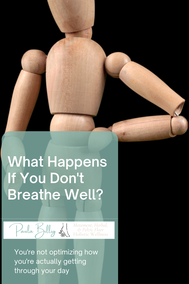













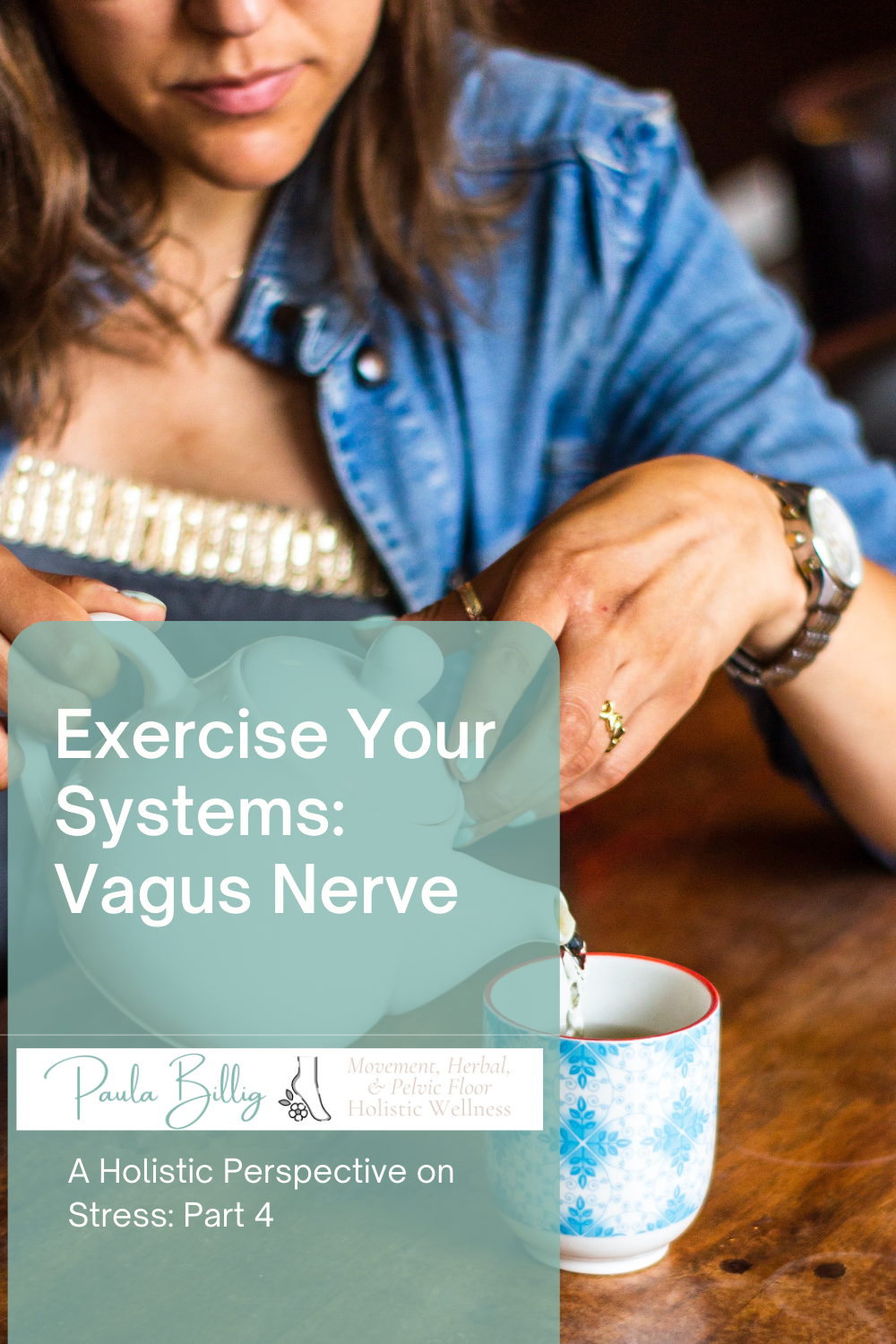

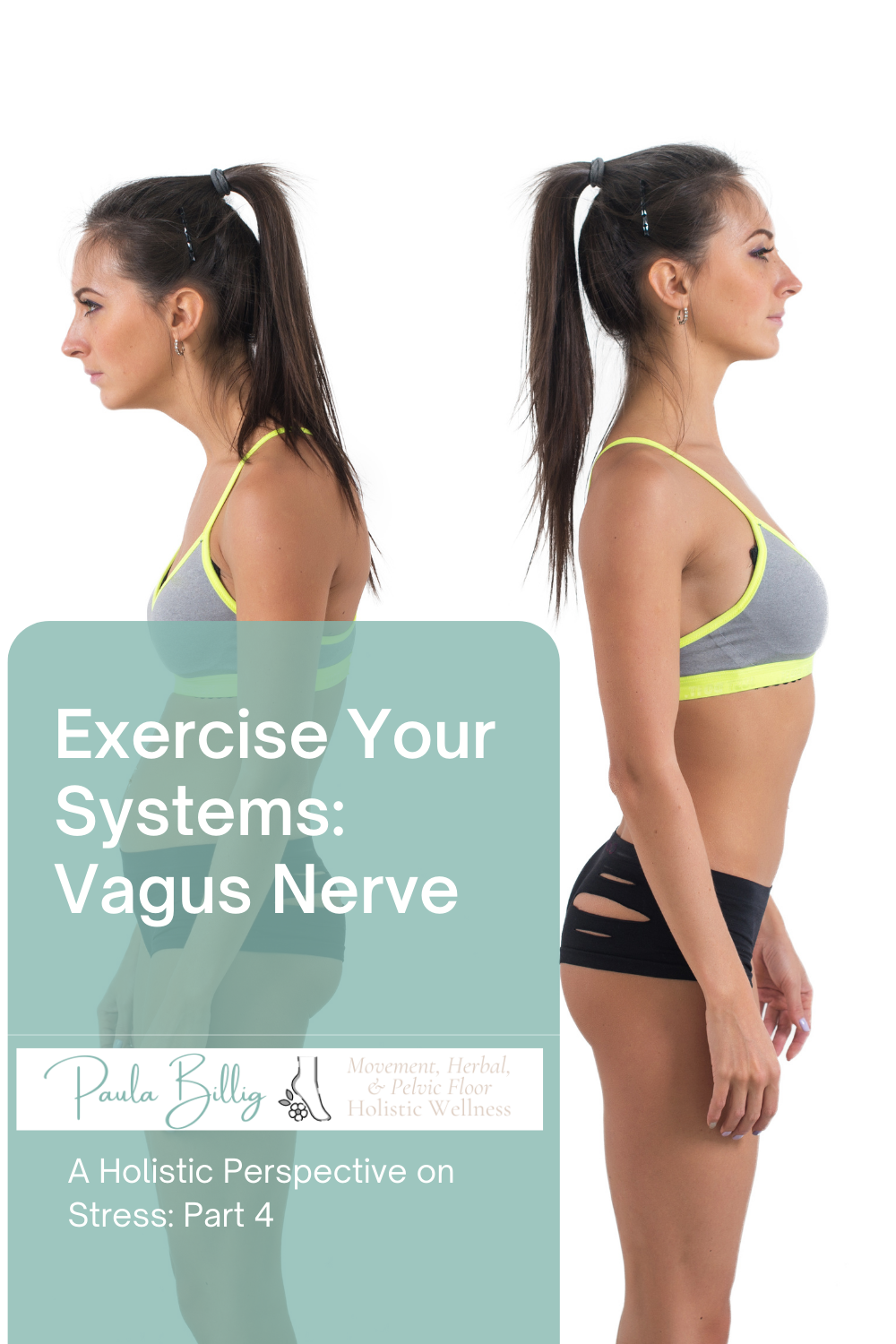
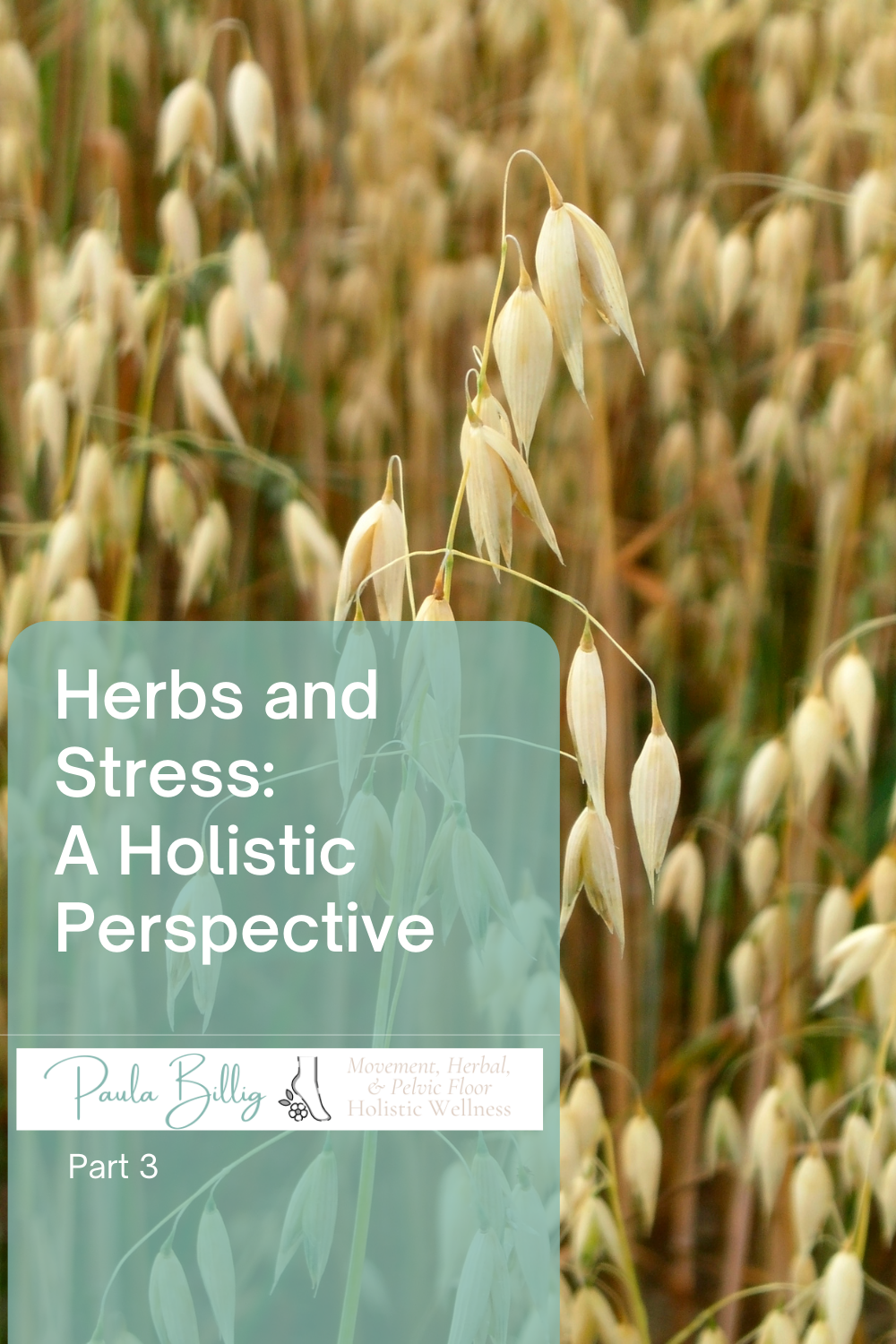












 RSS Feed
RSS Feed

